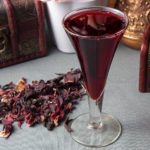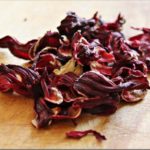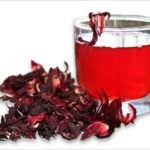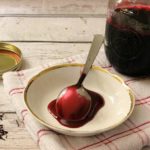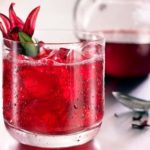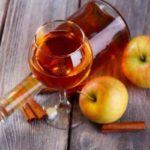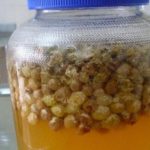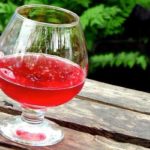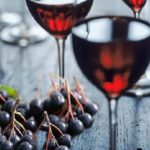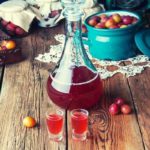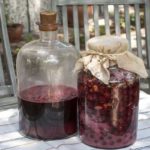Hibiscus tea from Sudanese rose has a sour taste and a beautiful red or burgundy color. In ancient times, it was especially valued for its medicinal qualities. Hibiscus is still very popular in Africa. Not only flowers and adjacent parts are used for food, but also seeds and leaves. When including hibiscus in the diet menu, not everyone knows that it can also be consumed in the form of wine made from the petals of a wonderful rose.
Features of making wine from hibiscus
Not many people have tried hibiscus wine yet, and some did not even suspect such a use of Sudanese rose petals. Therefore, it is worth dwelling on the specifics of preparing this drink. As always happens when preparing something edible, everyone makes their own changes to the recipe, thoughtfully or out of necessity. Already proven nuances of working with hibiscus:
- The process of preparing to put it in a bottle takes little energy, since there is no need to squeeze the juice, like from fruit.
- It is possible to produce both dry and sweet wine.
- When adding ingredients with a pronounced aroma, it is almost impossible to guess the presence of hibiscus, but the drink has a rich taste.
- Wine can be prepared in no time.
Required Ingredients
Hibiscus tea contains a lot of useful substances. He:
- lowers blood pressure;
- strengthens the walls of blood vessels, making them flexible;
- reduces stress loads;
- removes oxidants, excess saturated fats, cholesterol;
- quenches thirst in hot weather;
- exhibits a bactericidal effect.
It is noteworthy that making wine from a burgundy Sudanese rose does not deprive it of all the listed qualities. To prepare an alcoholic drink, it is necessary to trigger the fermentation process, hence the slight difference from the tea recipe.
For wine you will need the following ingredients (basic):
- water – 3 liters;
- hibiscus tea – 50 grams;
- dry wine yeast – 7-10 grams;
- granulated sugar – 500 grams;
- raisins – 1 glass.
This is the necessary foundation. But gourmets diversify the recipe, adding their favorite aromas to the hibiscus tea wine. The most popular additives are 50 g of lemon zest or juice of two lemons (per 3 liters). Thrill-seekers add a whole bunch of spices:
- 3 tablespoons of honey;
- 3 teaspoons cinnamon;
- 15 clove buds;
- 3 teaspoons ground ginger.
Here's an addition to the main package of ingredients, if desired.
Preparing ingredients for a recipe
Having planned to let the wine ferment, the day before, 3 liters of tap water are sent to settle. Winemakers who are accustomed to using water from bottles or from a machine can purchase it even at the last moment. Then the preliminary preparation will consist only of grinding black raisins (preferably) in a meat grinder and brewing hibiscus tea with boiling water. Leave the tea leaves for 3-5 hours. Microelements, antioxidants, and vitamins will be transferred into the infusion.
How to make wine from tea at home
Good wines are expensive drinks. Hibiscus wine, despite its wonderful taste, can be prepared even by a beginner in the kitchen. You must carefully follow the instructions:
- Tea from hibiscus petals is filtered through cheesecloth.
- Sugar is added to the infusion.
- Stir it until the crystals disappear from the bottom.
- Dry yeast is dissolved in this liquid.
- Pour the resulting mixture into a 10-liter bottle.
- Add crushed raisins to it.
- Shake the bottle several times.
- Place a water seal on the neck of the vessel.
- Place the bottle in a warm place.
- When fermentation stops, the new wine is carefully poured into a dry container so that the sediment at the bottom remains in the old vessel. In a new vessel, the drink is tightly sealed and sent to a cellar or other cold place for at least 1.5 months to complete the fermentation processes.
Storage periods and rules
The best temperature at which to keep wine to age (improve) is 12.5 °C. In this case, the most important condition is the absence of temperature fluctuations. Relative humidity during storage is 70%.Place the bottles horizontally to prevent the cork from drying out. Hibiscus wine is preferably bottled in dark glass. It is permissible to seal it in jars with glass lids. The wine is stored in a dark room without vibrations that raise sediment. In an apartment, its shelf life is 6 months.

